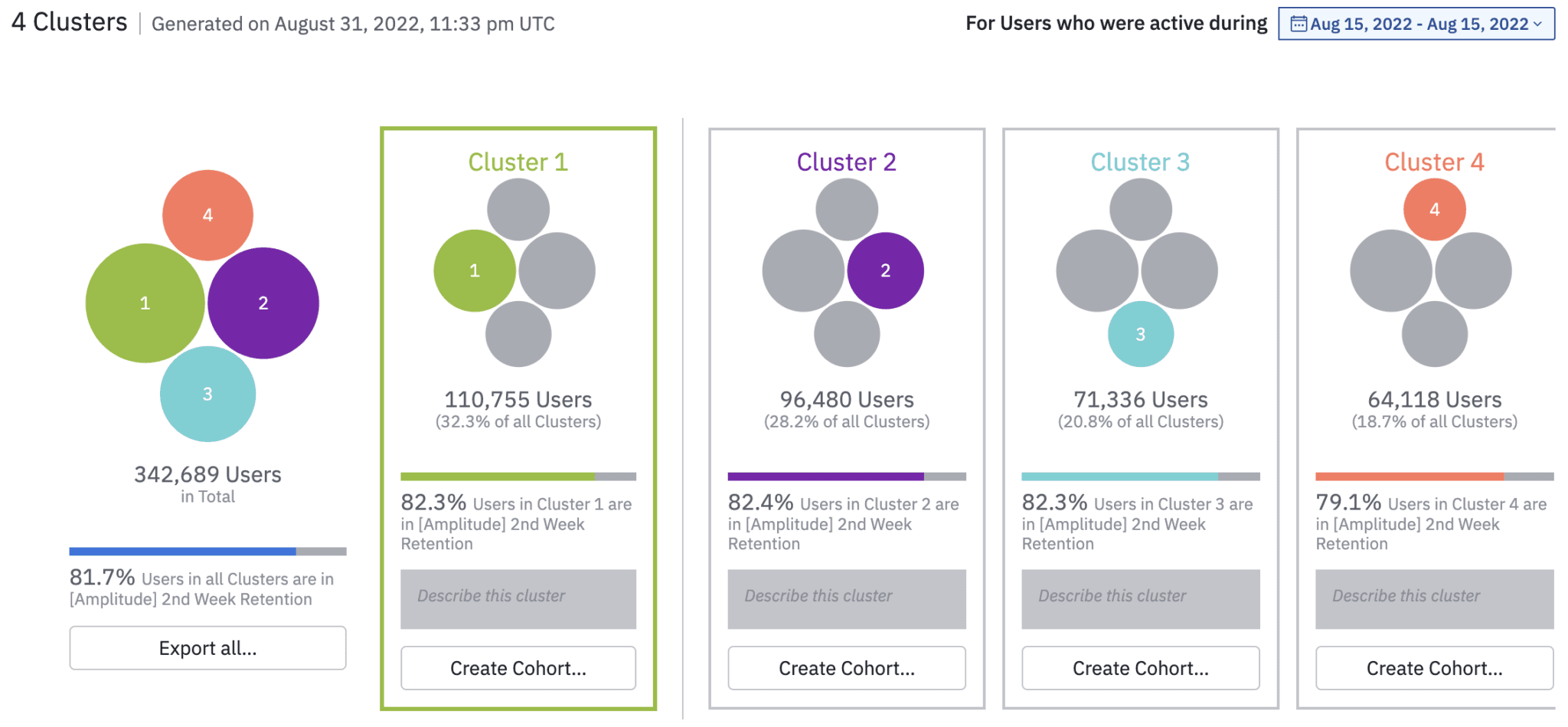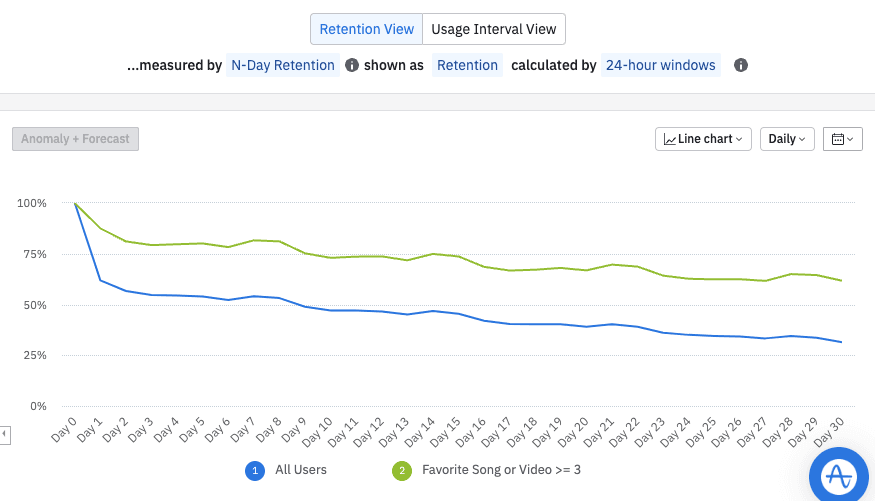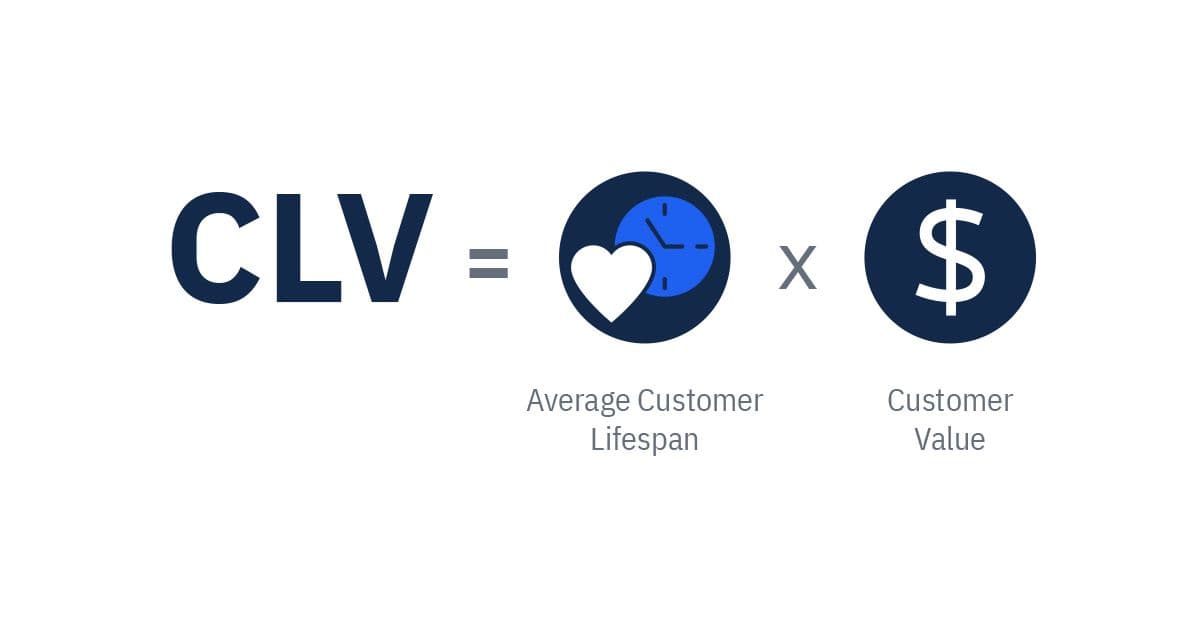5 Customer Segmentation Methods to Understand Purchasers
Use customer segmentation to understand your purchasers and develop more effective sales, marketing, and personalization strategies.
Customer segmentation involves dividing users into groups based on shared characteristics, such as demographics and behaviors. Customer segmentation is integral to learning more about your customers and providing personalized communication and offers that will influence their buying behavior.
As more consumers switch brands, the pressure is on marketing and sales teams to develop unique sales strategies that keep their businesses thriving.
If you want to prevent customer churn and grow your business, you must understand the why behind your target audience’s purchasing decisions. Why did they switch to a new brand? What are they looking for? What needs haven’t been met?
With the right segmentation data, you can better understand your customers, increase engagement, and boost sales.
Key takeaways
- Customer segmentation will help your business increase brand awareness, customer retention, and new sales. It also provides customer data that enables you to offer more relevant ad targeting and improve your product’s features and pricing.
- It’s crucial to set goals and objectives that guide your customer segmentation and marketing efforts. This is especially relevant when deciding between user vs. customer segmentation. Do you want to gather data on users who interact with your product or service or those in charge of purchasing your product or service?
- Regardless of your business type, customer segmentation typically involves grouping customers according to demographics, geographics, psychographics, or behavior.
- Digital companies can gain customer insights through technographic, behavioral, needs-based, value-based, or customer status segmentation.
- Customer segmentation mistakes to avoid include creating segments that are too narrow and not evolving or testing your segments over time.
- Use a customer segmentation tool like Amplitude that combines segmentation with behavioral analytics, experimentation, and personalization.
User segmentation vs. customer segmentation
In some cases, you may find it important to differentiate your segmentation according to users rather than customers. User segmentation refers to those who interact with your product or service, including free trial users who are not yet customers. Customer segmentation refers to the companies or individuals (buyers) who decide to buy the product in the first place.
In many cases, users and customers are the same. For example, users are frequently also the customers in B2C SaaS. A user who decides to upgrade from a free account to a paid account is also a customer who wants to access more features and benefits.
In B2B SaaS, the customer is usually the person or group of people who make the decision to buy on behalf of the end users in their business units. However, the customer isn’t necessarily going to use the product on a daily basis.
Customers can also be segmented by the type of company or by buyer persona, whereas an individual user holds a role within that company or persona type. For example, if you sell a social media ecommerce management software, you may create a segment for companies that partake in social selling, while the users of the software would likely be their social media managers or marketing team.
Typical customer segments to analyze
Once you’ve determined why and what you’re looking to learn about your customers (or users), you can decide which type of segmentation strategy would provide the most valuable information.
There are four basic types of customer segmentation that both digital and non-digital companies analyze for sales and market research:
- Demographic segmentation includes common characteristics like age, income, gender, and occupation.
- Geographic segmentation includes geographic locations like city, state, region, country, or continent.
- Psychographic segmentation includes personality traits, values, lifestyles, hobbies, and passions.
- Behavioral segmentation includes in-app user behaviors, personal lifestyle habits, purchase frequency, product preferences, and other tendencies.
Create customer archetypes for customized targeting
After collecting demographic, geographic, psychographic, or behavioral data, it may be helpful to find more granular similarities within each of these different segments. These segments are your customer personas or archetypes.
To identify your personas, conduct cluster analysis, a mathematical model that uncovers similar, small variations within each group. Then, create segments (or cohorts) for these groups of customers to tailor your sales and marketing messages.

An example of cluster analysis using Amplitude’s Personas chart.
5 customer segmentation methods & models to apply in a digital company
At digital companies, there are five main customer segmentation models to help you understand more about your prospects or purchasers. To decide which model to use, start by setting clear goals that help you identify what you want to learn about your customers.
According to a study conducted by Accenture, 91% of respondents prefer brands that offer more personalized experiences over those that do not. Clear objectives about your target customer will guide you on which segmentation models will be effective for developing marketing personalization strategies.
There are five main customer segmentation models:
- Technographic segmentation
- Customer behavior segmentation
- Needs-based segmentation
- Customer status segmentation
- Value-based segmentation
1. Technographic segmentation
Technographic segmentation refers to the types of devices, software, technologies, or other tools customers use. For example, say you work at a SaaS company focused on increasing app downloads. An effective strategy would be to segment your customers based on whether they prefer mobile devices over laptops or tablets and which device model they use.
You may also be interested in the apps your customer base uses. This information can guide your marketing strategy, like placing an ad for your app in another relevant app your customers already use. Another option would be to personalize an email message to highlight how they can sync their information with another app they already use, like the health app on their iPhones.
Technographic segmentation can also tell you more about your customers’ interests by asking customers how they first heard about your company. After signing up for a new product or service, a “How did you hear about us?” email is common. Understanding the referral source that led your customer to your product or service can give you insight into their other interests and hobbies.
2. Customer behavioral segmentation
Behavioral segmentation involves grouping customers into categories—behavioral cohorts—based on actions they take inside your product. For example, say you have a music app and want to see whether certain behaviors correlate with retention. You can use cohort analysis to create a segment of users who favorite three or more songs in your app and use a product analytics tool like Amplitude Analytics to measure each group’s retention.

In this Retention Analysis chart, almost 80% of users who favorite three or more songs (green) are retained after day one, whereas only 60% of all users (blue) are retained. Try exploring behavioral cohorts in your data by getting started with Amplitude for free.
When you understand why people convert and use your product, you can implement tactics that lean into those reasons. The same goes for retention and maintaining long-term, loyal customers. Understanding user behaviors will help you make more informed marketing, product, and sales decisions for all stages of the customer lifecycle.
You can use product analytics tools to track real-time customer activity and automate personalized responses to those behaviors. For example, the leading segmentation methods for ecommerce websites are real-time behavior tracking and automation. These websites automatically populate products on the checkout page based on consumer behavior. They also send suggested products or updates about product development based on past purchases.
Make sure to include customer service in the personalized customer experience. Chatbots are a great way to increase customer engagement and conversions. If a user spends over a certain amount of time on a page or browsing your website, enable a chatbot to pop up and offer guidance or connect them with a customer service representative.
3. Needs-based segmentation
Needs-based segmentation involves segmenting customer groups by their financial, emotional, and physical needs. Determine the pain points your audience has regarding those needs. Whether they want to find a budget-friendly gift, a solution for a collaboration issue at work, or a desk chair cushion for their back pain, you can discover what your target customer needs through targeted needs-based segmentation.
The table below shows financial, emotional, and physical pain point examples.
| Need | Pain Points |
| Financial | Pricing: Determine if your customers are price conscious or indifferent. If you offer a tiered pricing structure, segment according to the tiers. |
| Cancellation or return policy: Group customers who canceled or returned an item and received a refund. | |
| Free shipping and other perks: Create segments of those who took advantage of free shipping or other customer loyalty perks. | |
| Emotional | Customer service: Group users who’ve visited your customer service landing page, connected with a support team member, or filled out a contact form. |
| Onboarding process: Segment the users who went through the onboarding process without reaching out for assistance. | |
| Fulfills a desire: Segment customers who leave positive and negative reviews. | |
| Physical | Accessibility and user experience: Determine which segment of your customers require accessibility features in your software or online store. |
| Environmental and physical improvement: Create a segment for customers who use your product or service to improve their body or physical environment. |
4. Customer status segmentation
Customer status or customer lifecycle segmentation refers to grouping customers based on their place in the customer lifecycle. This includes leads, new customers, loyal/long-time customers, at-risk customers, and churned customers. Use the RFM model (Recency, Frequency, and Monetary Value) to figure out which stage your customers are in.
Using the RFM model, rank your customers on a scale of one to five for each of the three categories. If a customer has a higher ranking, they’re more likely to do business with you, and you should primarily tailor your marketing for this segment. Your highest ranking segment will consist of your most loyal customers with high purchasing behavior.
However, to grow your business, focus a portion of your marketing and sales strategy on other parts of the customer journey—acquiring and converting leads, onboarding and retaining new customers, and incentivizing and gaining back at-risk customers. By analyzing the customer data from your segmentation research, you can improve your product and launch marketing campaigns that may win over indecisive and churned customers. For example, an ecommerce company might send dormant customers a discount code to use for their next purchase.
5. Value-based segmentation
Value-based segmentation involves grouping customers based on their financial value for your business. You can use the RFM model to determine which of your customers are more profitable than others. Gear your marketing and sales tactics toward customers in the “high value” group.
Focusing on segments with high customer lifetime value (CLV) will help maximize your ROI since they are less costly to attract, convert, and maintain than low-value segments. As you build your value-based segments, assign value drivers to each segment to help you determine a more accurate sales strategy for customers in these segments.

Customer lifetime value (CLV) = Average customer lifespan x Customer value
How to develop effective value-based segments:
- Identify the value drivers (elements that shape customer perception of the product or service’s value) for each segment.
- Interview customers, industry experts, sales teams, and other stakeholders to determine the motivation behind purchasing decisions. Or use a product analytics tool to help uncover the why behind user behavior.
- Match the top value drivers to your marketing team’s capabilities and prioritize the ones with the highest ROI potential.
- Develop primary and secondary value-based segments based on the prioritized value drivers and reassign your customers into these segments.
- Set key performance metrics (KPIs) to measure the fluctuating value of your customers and manage marketing segmentation attempts as you go.
Common customer segmentation mistakes to avoid
As you work through the customer segmentation process, there are a few common mistakes to avoid, so you don’t waste time and energy or lead your team astray.
- Create targeted customer segments, but don’t make your segment too narrow otherwise it can result in inaccurate data.
- Avoid segmenting for groups that have little chance of purchasing. Use customer segmentation analysis to determine which segments tend to be profitable.
- Keep your customer segmentation models flexible. As your customers evolve over time, your segments should evolve, too.
- Make sure you’re testing your segments accurately and repeatedly. Experiment with different combinations to maximize the scope of your data.
Customer segmentation software & tools to consider using
Use customer segmentation software and tools with additional functionality to help your team collaborate and streamline their work. In 2020, $3.2 billion was spent on solutions for analytics, modeling, and segmentation. Amplitude is a good choice for improving your sales, marketing, and, ultimately, customer satisfaction.
Try Amplitude’s customer segmentation capabilities for free in our self-service demo, or learn how Jumbo Interactive uses customer segmentation to personalize its marketing strategy and increase conversions.
References
- How US consumers are feeling, shopping, and spending—and what it means for companies. McKinsey & Company.
- Stats that show the importance of personalization for customers. Analytics Insight.
- Recency, Frequency, Monetary Value (RFM). Investopedia.
- Value-Based Segmentation Vs. Balanced Portfolio Strategy: What Should CMOs Focus On? Forbes.

Asavari Tayal
Former Director of Product, Amplitude
Asavari Tayal is a former director of product for Amplitude's personalization and audience management offering. Before that, she was instrumental in building products and key innovations for the Netlify Edge, Salesforce / Heroku Serverless Platform, Azure Functions & App Services, and Data Integration for Microsoft Flow and PowerApps. She specializes in low-code platforms, developer products and experiences, product-led growth, and monetization strategies.
More from Asavari




